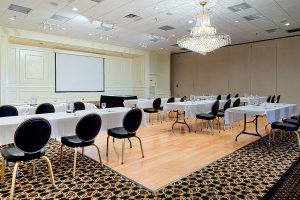 You are likely familiar with the pay-as-you-go model of cloud computing. The idea is to charge for technology services much like utilities are billed. Users are billed for only the computing resources they use as opposed to paying a flat license fee to own and use the software or service. This model has proven to be more cost effective for organizations with inconsistent needs in terms of computing and storage power, allowing them to scale their use up or down as the work demands. Now, this same idea is making its way into the training and event space.
You are likely familiar with the pay-as-you-go model of cloud computing. The idea is to charge for technology services much like utilities are billed. Users are billed for only the computing resources they use as opposed to paying a flat license fee to own and use the software or service. This model has proven to be more cost effective for organizations with inconsistent needs in terms of computing and storage power, allowing them to scale their use up or down as the work demands. Now, this same idea is making its way into the training and event space.
A survey of healthcare professionals found more than three-quarters of respondents would only participate in a meeting that could show a good return on their investment of time and money. Measuring that ROI can be tricky, but attendees across all industries tend to look to events that provide: Continue reading




